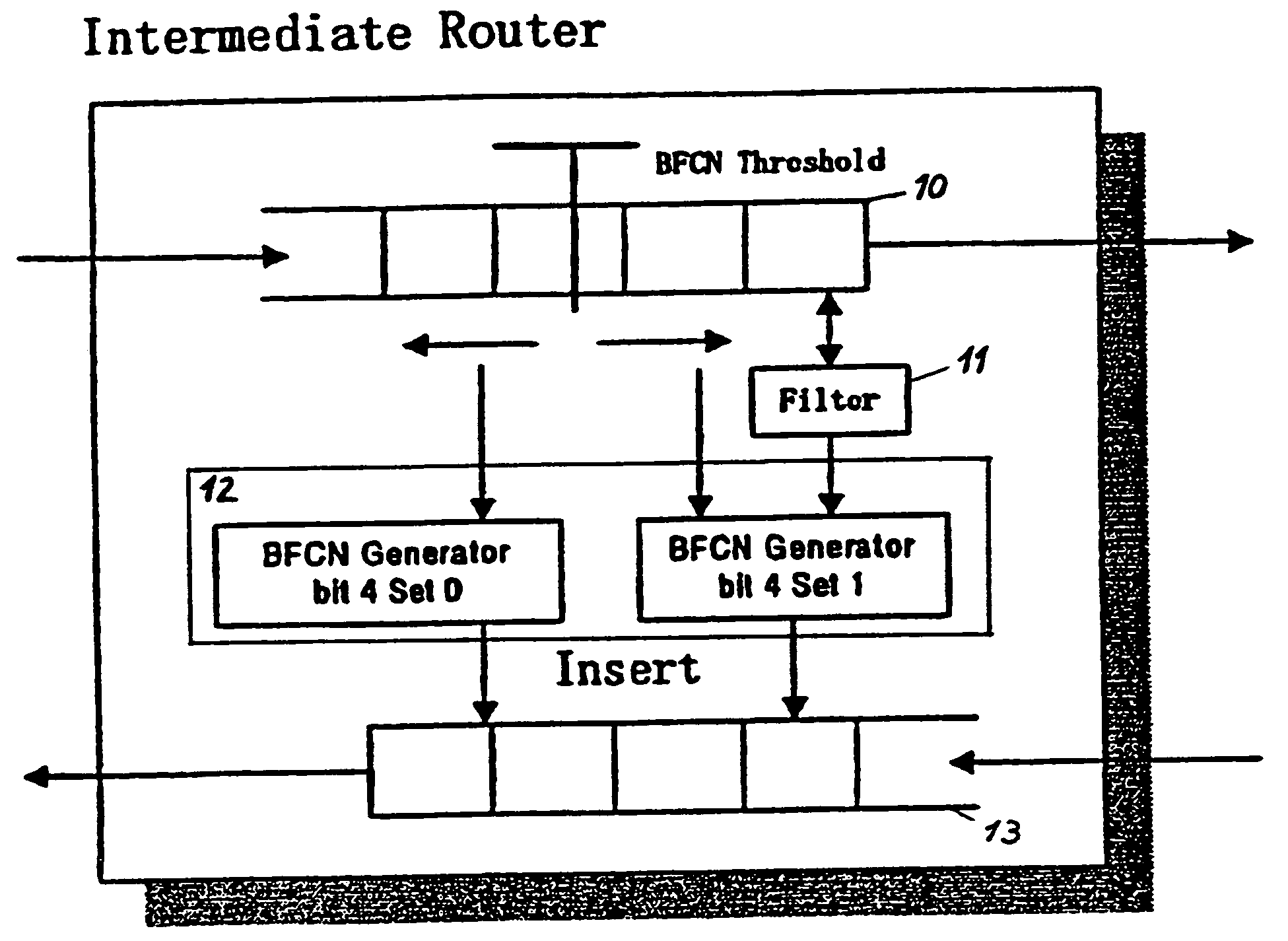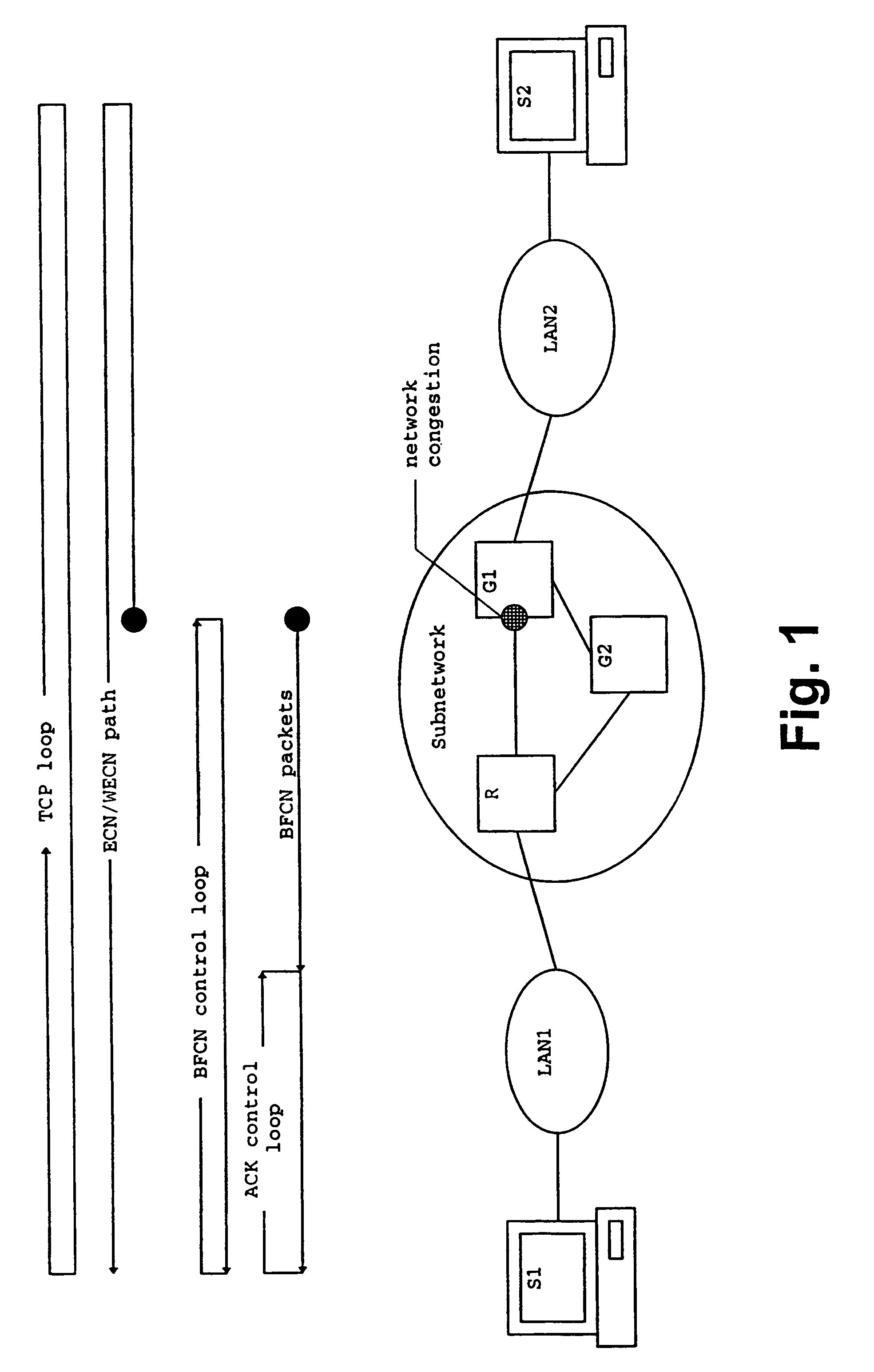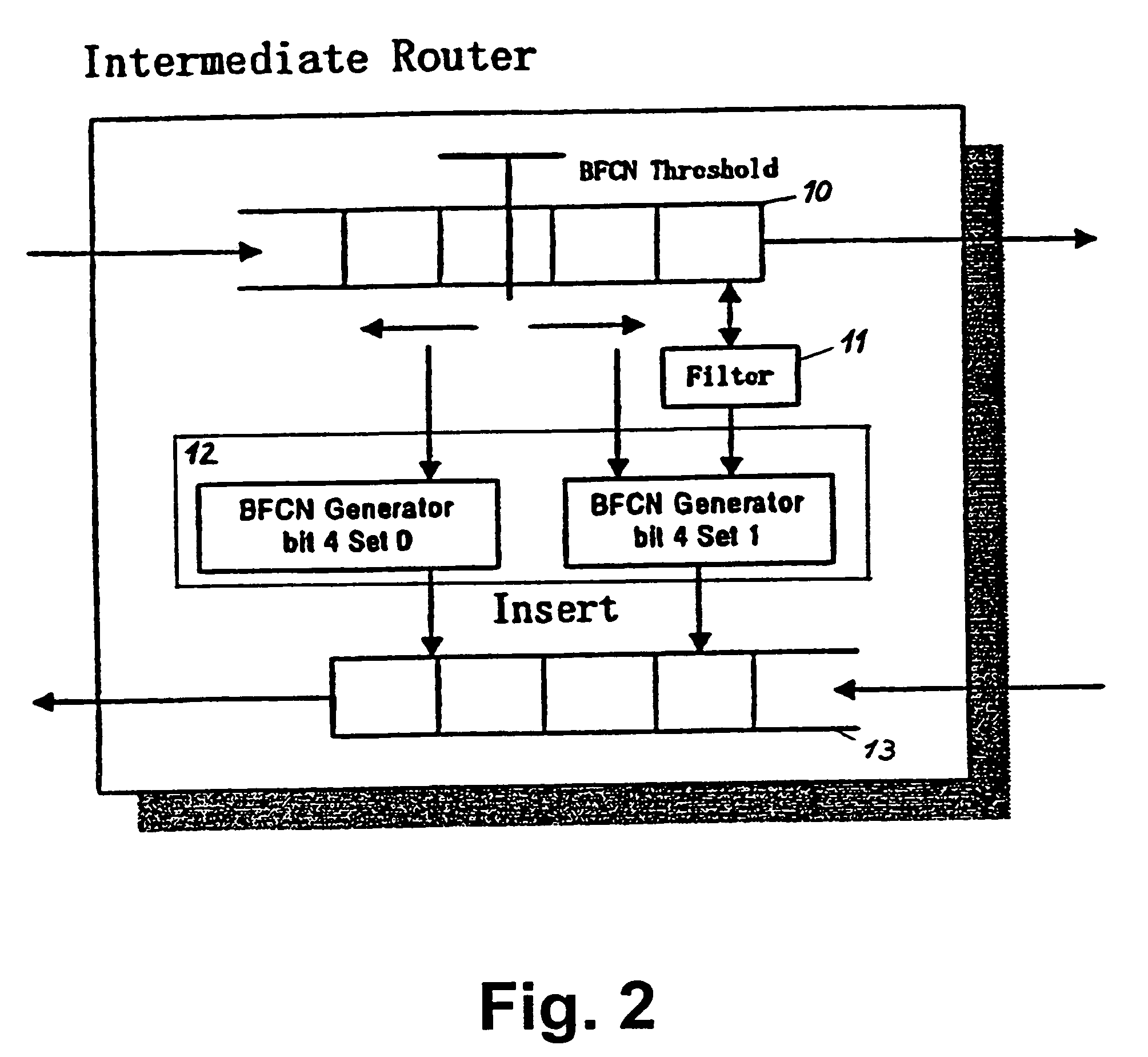Congestion control method for a packet-switched network
- Summary
- Abstract
- Description
- Claims
- Application Information
AI Technical Summary
Benefits of technology
Problems solved by technology
Method used
Image
Examples
Embodiment Construction
[0040]In the following, the preferred embodiment of the congestion control method and packet-switched telecommunication network according to the present invention will be described on the basis of an IP network as shown in FIG. 1.
[0041]FIG. 1 shows a network configuration, wherein TCP sources S1 and S2 are connected via respective local area networks LAN1 and LAN2 to an IP subnetwork comprising network nodes such as an intermediate router R and gateways G1 and G2, through which data packets are transmitted in the IP subnetwork. Each of the local area networks LAN1 and LAN2 is connected to the subnetwork via a respective edge device, e.g. access node (not shown).
[0042]On the upper half of FIG. 1, the transmission path of the ECN / WECN messages and the TCP control loop are shown together with the respective control path and loop according to the preferred embodiment of the present invention. According to the known congestion control mechanisms, an individual congestion notification mes...
PUM
 Login to View More
Login to View More Abstract
Description
Claims
Application Information
 Login to View More
Login to View More - R&D
- Intellectual Property
- Life Sciences
- Materials
- Tech Scout
- Unparalleled Data Quality
- Higher Quality Content
- 60% Fewer Hallucinations
Browse by: Latest US Patents, China's latest patents, Technical Efficacy Thesaurus, Application Domain, Technology Topic, Popular Technical Reports.
© 2025 PatSnap. All rights reserved.Legal|Privacy policy|Modern Slavery Act Transparency Statement|Sitemap|About US| Contact US: help@patsnap.com



